Sotiris A. Tegos
Fluid Aerial Networks: UAV Rotation for Inter-Cell Interference Mitigation
Jul 02, 2025Abstract:With the rapid development of aerial infrastructure, unmanned aerial vehicles (UAVs) that function as aerial base stations (ABSs) extend terrestrial network services into the sky, enabling on-demand connectivity and enhancing emergency communication capabilities in cellular networks by leveraging the flexibility and mobility of UAVs. In such a UAV-assisted network, this paper investigates position-based beamforming between ABSs and ground users (GUs). To mitigate inter-cell interference, we propose a novel fluid aerial network that leverages ABS rotation to increase multi-cell capacity and overall network efficiency. Specifically, considering the line-of-sight channel model, the spatial beamforming weights are determined by the orientation angles of the GUs. In this direction, we examine the beamforming gain of a two-dimensional multiple-input multiple-output (MIMO) array at various ground positions, revealing that ABS rotation significantly affects multi-user channel correlation and inter-cell interference. Based on these findings, we propose an alternative low-complexity algorithm to design the optimal rotation angle for ABSs, aiming to reduce inter-cell interference and thus maximize the sum rate of multi-cell systems. In simulations, exhaustive search serves as a benchmark to validate the optimization performance of the proposed sequential ABS rotation scheme. Moreover, simulation results demonstrate that, in interference-limited regions, the proposed ABS rotation paradigm can significantly reduce inter-cell interference in terrestrial networks and improve the multi-cell sum rate by approximately 10\% compared to fixed-direction ABSs without rotation.
Cognitive-Radio Functionality: A Novel Configuration for STAR-RIS assisted RSMA Networks
May 30, 2025Abstract:Cognitive radio rate-splitting multiple access (CR-RSMA) has emerged as a promising multiple access framework that can efficiently manage interference and adapt dynamically to heterogeneous quality-of-service (QoS) requirements. To effectively support such demanding access schemes, programmable wireless environments have attracted considerable attention, especially through simultaneously transmitting and reflecting reconfigurable intelligent surfaces (STAR-RISs), which can enable full-space control of signal propagation in asymmetric user deployments. In this paper, we propose the cognitive radio (CR) functionality for STAR-RIS-assisted CR-RSMA systems, leveraging the unique capability of the STAR-RIS to combine element and power splitting for adaptive control of transmission and reflection in CR scenarios. Specifically, the proposed CR functionality partitions the STAR-RIS into two regions independently controlling the transmission and reflection of signals, simultaneously ensuring the required QoS for the primary user and enhancing the performance of the secondary user. To accurately characterize the system performance, we derive analytical expressions for the ergodic rate of the secondary user and the outage rate of the primary user under Nakagami-m fading. Finally, simulation results show that the proposed approach effectively manages interference, guarantees the QoS of the primary user, and significantly improves the throughput of the secondary user, highlighting STAR-RIS as an efficient solution for CR-RSMA-based services.
OFDMA for Pinching Antenna Systems
May 26, 2025Abstract:Pinching-antenna (PA) systems route millimeter wave (mmWave) signals through a leaky waveguide and radiate them at "pinch" apertures, offering low-cost line-of-sight (LoS) coverage. However, when multiple PAs serve multiple users simultaneously, the downlink channel becomes strongly frequency-selective, creating inter-symbol interference (ISI) that existing single-carrier designs overlook. This paper models the overall channel as a finite impulse response (FIR) filter, characterizes its frequency selectivity, and explicitly accounts for the resulting ISI. To overcome ISI, we introduce an orthogonal frequency-division multiple access (OFDMA)-based framework and formulate a max-min resource-allocation problem to achieve user fairness. A lightweight two-stage heuristic-greedy subcarrier assignment, followed by per-user water-filling, achieves near-optimal fairness with polynomial complexity. Simulation results for an indoor layout demonstrate that the proposed scheme notably increases the minimum user rate compared to time-division single-carrier baselines and remains robust under moderate LoS blockage.
Cramér-Rao Bounds for Integrated Sensing and Communications in Pinching-Antenna Systems
May 02, 2025


Abstract:Pinching-antenna systems (PASs) have recently emerged as a flexible, cost-effective route to large-scale antenna deployments envisioned for integrated sensing and communications (ISAC). This paper establishes the fundamental sensing limits of a bistatic PAS link by deriving closed-form Cram\'er-Rao lower bounds for the joint estimation of range and direction when a target is illuminated by pinching antennas placed along a dielectric waveguide and observed by a uniform linear array receiver. By rigorously preserving the amplitude and phase variations of each pinching antenna, as well as exploiting their non-uniform deployment, we gain valuable insights into the performance gain of PASs over conventional antenna arrays. Numerical results validate that the PAS-based ISAC can achieve centimeter-level ranging and sub-degree angular resolution with significantly fewer hardware resources than conventional uniform linear arrays. The derived bounds provide practical design guidelines for next-generation PAS-enabled ISAC systems.
Secrecy Rate Maximization with Artificial Noise for Pinching-Antenna Systems
Apr 14, 2025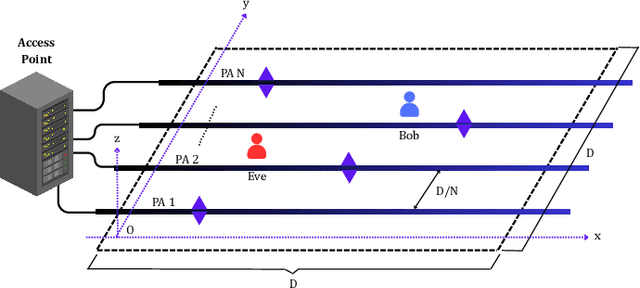
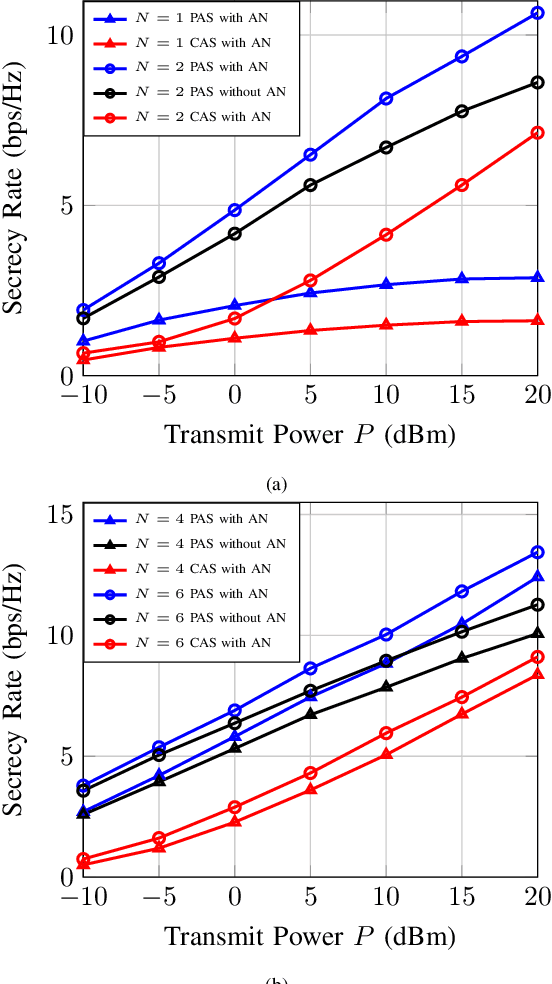
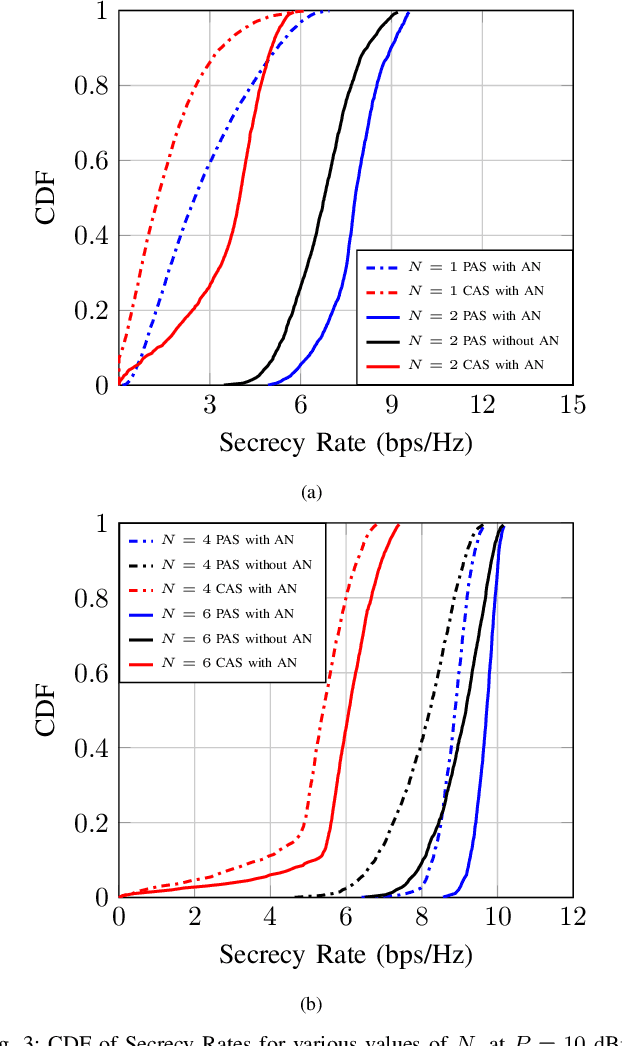
Abstract:Security is emerging as a critical performance metric for next-generation wireless networks, but conventional multiple-input-multiple-output (MIMO) systems often suffer from severe path loss and are vulnerable to nearby eavesdroppers due to their fixed-antenna configurations. Pinching-antenna systems (PAS) offer a promising alternative, leveraging reconfigurable pinching antennas (PAs) positioned along low-loss dielectric waveguides to enhance channel conditions and dynamically mitigate security threats. In this paper, we propose an artificial noise (AN)-based beamforming scheme for downlink transmissions in PAS, with the goal of maximizing the secrecy rate. A closed-form solution is derived for the single-waveguide scenario, while an alternating optimization approach addresses more complex multiple waveguide setups. Numerical results show that the proposed scheme significantly outperforms conventional MIMO and existing PAS security schemes.
Cross-Band Modulation Design for Hybrid RF-Optical Systems
Mar 21, 2025Abstract:We present a novel cross-band modulation framework that combines 3D modulation in the RF domain with intensity modulation and direct detection in the optical domain, the first such integration to enhance communication reliability. By harnessing cross-band diversity, the framework optimizes symbol mapping across RF and optical links, significantly boosting mutual information (MI) and reducing symbol error probability (SEP). Two practical modulation schemes implement this framework, both using quadrature amplitude modulation in the RF subsystem. The first is a linear cross-band mapping scheme, where RF symbols are mapped to optical intensity values via an analytically tractable optimization that ensures O(1) detection complexity while minimizing SEP. The second employs a deep neural network-generated (DNN-Gen) 3D constellation with a custom loss function that adaptively optimizes symbol placement to maximize MI and minimize SEP. Although DNN-Gen incurs higher computational complexity than the linear approach, it adapts the 3D constellation to varying signal-to-noise ratios, yielding significant performance gains. Furthermore, we derive a theoretical MI benchmark for the linear scheme, offering insights into the fundamental limits of RF-optical cross-band communication. Extensive Monte Carlo simulations confirm that both schemes outperform SoA cross-band modulation techniques, including cross-band pulse amplitude modulation, with notable improvements. Additionally, DNN-Gen maintains high performance over a range of RF SNRs, lessening the need for exhaustive training at every operating condition. Overall, these results establish our cross-band modulation framework as a scalable, high-performance solution for next-generation hybrid RF-optical networks, balancing low complexity with optimized symbol mapping to maximize system reliability and efficiency.
Stochastic Geometry for Modeling and Analysis of Sensing and Communications: A Survey
Mar 12, 2025



Abstract:One of the most promising technologies for next-generation wireless networks is integrated communication and sensing (ISAC). It is considered a key enabler for applications that require both enhanced communication and accurate sensing capabilities. Examples of such applications include smart environments, augmented and virtual reality, or the internet of things, where the capabilities of intelligent sensing and broadband communications are vital. Therefore, ISAC has attracted the research interest of both academia and industry, and many investigations have been carried out over the past decade. The articles in the literature include system models, performance evaluation, and optimization studies of several ISAC alternative designs. Stochastic geometry is the study and analysis of random spatial patterns, and as such, stochastic geometry tools have been considered for the performance evaluation of wireless networks with different types of nodes. In this paper, we aim to provide a comprehensive survey of current research progress in performance evaluation of ISAC systems using stochastic geometry tools. The survey covers terrestrial, aerial, and vehicular networks, where the random spatial location of the corresponding network elements and propagation scatterers and/or blockages is treated with various point processes. The paper starts with a short tutorial on ISAC technology, stochastic geometry tools, and metrics used in performance evaluation of communication and sensing. Then, the technical components of the system models utilized in the surveyed papers are discussed. Subsequently, we present the key results of the literature in all types of networks using three levels of integration: sensing-assisted communication, communication-assisted sensing, and joint sensing and communication. Finally, future research challenges and promising directions are discussed.
Split Learning in Computer Vision for Semantic Segmentation Delay Minimization
Dec 18, 2024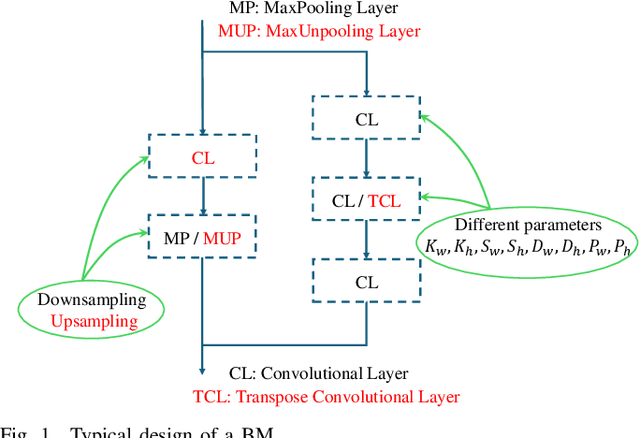
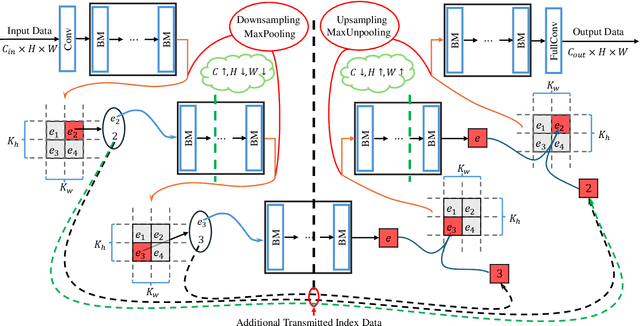
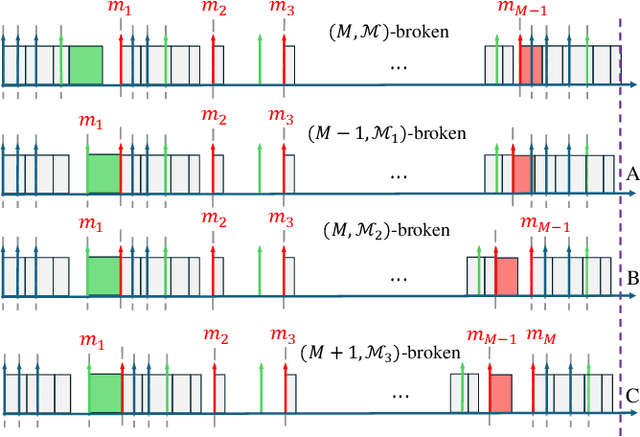
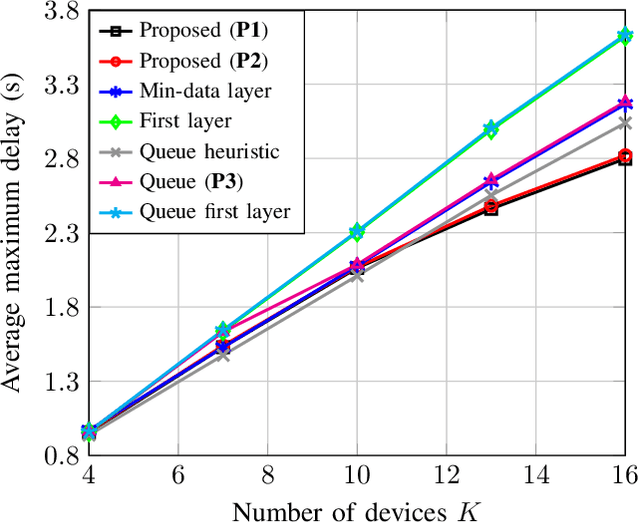
Abstract:In this paper, we propose a novel approach to minimize the inference delay in semantic segmentation using split learning (SL), tailored to the needs of real-time computer vision (CV) applications for resource-constrained devices. Semantic segmentation is essential for applications such as autonomous vehicles and smart city infrastructure, but faces significant latency challenges due to high computational and communication loads. Traditional centralized processing methods are inefficient for such scenarios, often resulting in unacceptable inference delays. SL offers a promising alternative by partitioning deep neural networks (DNNs) between edge devices and a central server, enabling localized data processing and reducing the amount of data required for transmission. Our contribution includes the joint optimization of bandwidth allocation, cut layer selection of the edge devices' DNN, and the central server's processing resource allocation. We investigate both parallel and serial data processing scenarios and propose low-complexity heuristic solutions that maintain near-optimal performance while reducing computational requirements. Numerical results show that our approach effectively reduces inference delay, demonstrating the potential of SL for improving real-time CV applications in dynamic, resource-constrained environments.
Minimum Data Rate Maximization for Uplink Pinching-Antenna Systems
Dec 18, 2024Abstract:This paper addresses, for the first time, the uplink performance optimization of multi-user pinching-antenna systems, recently developed for next-generation wireless networks. By leveraging the unique capabilities of pinching antennas to dynamically configure wireless channels, we focus on maximizing the minimum achievable data rate between devices to achieve a balanced trade-off between throughput and fairness. An effective approach is proposed that separately optimizes the positions of the pinching antennas and the resource allocation. The antenna positioning problem is reformulated into a convex one, while a closed-form solution is provided for the resource allocation. Simulation results demonstrate the superior performance of the investigated system using the proposed algorithm over corresponding counterparts, emphasizing the significant potential of pinching-antenna systems for robust and efficient uplink communication in next-generation wireless networks.
Hybrid Semantic-Shannon Communications
Oct 02, 2024Abstract:Semantic communications are considered a promising beyond-Shannon/bit paradigm to reduce network traffic and increase reliability, thus making wireless networks more energy efficient, robust, and sustainable. However, the performance is limited by the efficiency of the semantic transceivers, i.e., the achievable "similarity" between the transmitted and received signals. Under strict similarity conditions, semantic transmission may not be applicable and bit communication is mandatory. In this paper, for the first time in the literature, we propose a multi-carrier Hybrid Semantic-Shannon communication system where, without loss of generality, the case of text transmission is investigated. To this end, a joint semantic-bit transmission selection and power allocation optimization problem is formulated, aiming to minimize two transmission delay metrics widely used in the literature, subject to strict similarity thresholds. Despite their non-convexity, both problems are decomposed into a convex and a mixed linear integer programming problem by using alternating optimization, both of which can be solved optimally. Furthermore, to improve the performance of the proposed hybrid schemes, a novel association of text sentences to subcarriers is proposed based on the data size of the sentences and the channel gains of the subcarriers. We show that the proposed association is optimal in terms of transmission delay. Numerical simulations verify the effectiveness of the proposed hybrid semantic-bit communication scheme and the derived sentence-to-subcarrier association, and provide useful insights into the design parameters of such systems.
 Add to Chrome
Add to Chrome Add to Firefox
Add to Firefox Add to Edge
Add to Edge